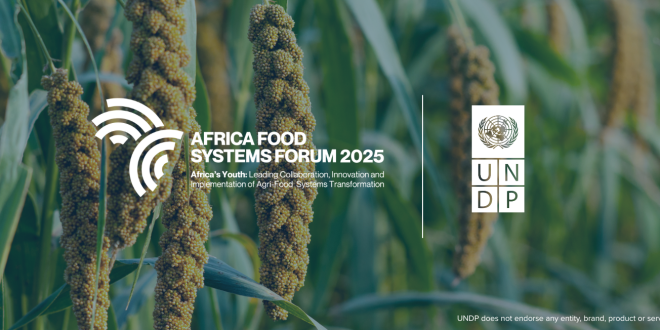Young African agripreneurs are stepping up their game, aren’t they? They’re not just farming; they’re revolutionizing the entire agrifood system using something pretty cool: Artificial Intelligence (AI). Think about it: climate change throwing curveballs, old-school farming methods struggling, and getting products to market is a headache. But these young innovators? They’re diving headfirst into AI to seriously boost how much we grow, make things sustainable, and, most importantly, secure our food supply. Let’s dive into how they’re making it happen.
The Rise of AI in African Agriculture
Addressing Key Challenges with AI
Look, African agriculture’s got its fair share of problems. Unpredictable weather? Check. Pests eating everything? Double-check. Soil kinda tired? Yup. And after all that, getting stuff to people without it spoiling? Ugh. But AI? It’s like a Swiss Army knife for all this. It’s packing tools like:
- Precision farming techniques – think laser-focused farming.
- Early warning systems for nasty pests and diseases.
- Climate-smart solutions that make Mother Nature less of a bully.
- Supply chains so slick they make logistics managers weep with joy.
Examples of AI-Powered Solutions
It’s not just talk either. You’ve got young, brilliant minds across the continent already rolling out some seriously impressive AI stuff. Take a look:
- Drones and satellite imagery watching over crops: Imagine drones zipping around, taking snapshots. Then, boom! AI analyzes it all, spotting where things are healthy, where they aren’t, and telling farmers where to water or fertilize.
- Apps that are basically pest and disease detectives: Snap a pic of a suspicious leaf, and the app tells you exactly what’s wrong and how to fix it. Pretty neat, huh?
- AI-powered market connections: No more middleman headaches! Farmers link directly with buyers, meaning more cash in their pockets.
Spotlight on Innovative Agripreneurs
Case Study 1: Salisha Odinga and “FarmEye”
Salisha, based out of Nairobi, Kenya, noticed how many farmers were losing crops to diseases they just couldn’t identify early enough. So, she developed “FarmEye,” an AI-powered app that uses image recognition to diagnose crop diseases from a simple smartphone photo. Farmers upload images, the AI does its thing, and within minutes, they get a diagnosis and recommended treatment plan. It’s reduced crop loss by, get this, 40% in some areas! But Salisha’s had her challenges. Getting farmers to trust the tech, especially older generations, took time. “Convincing them it’s not witchcraft was half the battle,” she jokes. Jokes, but seriously, changing mindsets is tough.
Case Study 2: Kwame Adebayo and “AgriPredict”
Kwame, from Nigeria, is tackling climate change head-on with “AgriPredict.” His system uses AI to analyze weather patterns and predict droughts or floods weeks in advance. Farmers get SMS alerts on their phones, advising them on when to plant, what to plant, and how to prepare for extreme weather. It’s like having a personal weather guru. Kwame admits the biggest hurdle has been accessing reliable data. “Garbage in, garbage out,” he says. “We need good data to make good predictions.” He’s working with local meteorological services to improve data quality and accuracy. It is really important.
Case Study 3: Aisha Diallo and “MaliFoods”
Aisha, in Mali, saw how much food was going to waste because farmers couldn’t find buyers quickly enough. So, she built “MaliFoods,” an AI-powered platform that connects smallholder farmers directly with restaurants and retailers in urban areas. The AI matches supply and demand, optimizing logistics and reducing post-harvest losses. Farmers are seeing their incomes increase by up to 30%! Aisha struggles with internet connectivity in rural areas. “It’s like trying to run a marathon with one shoe,” she sighs. She’s partnering with local telecoms to expand network coverage and make her platform accessible to even the most remote farmers.
Challenges and Opportunities
Bridging the Digital Divide
Okay, let’s be real. Not everyone’s got blazing-fast internet in Africa. Or even a smartphone, for that matter. This “digital divide” is a huge obstacle. If farmers can’t get online, they can’t use these AI tools. Simple as that.
Data Availability and Quality
AI is only as good as the info you feed it. If you’re using dodgy data on soil, weather, or pests, the AI will give you dodgy advice. We need to up our game when it comes to collecting and sharing reliable data.
Skills Development and Training
Imagine giving someone a super-fancy gadget without showing them how to use it. Kinda pointless, right? Farmers and extension workers need training to get the most out of these AI tools. Investing in skills is key.
The Future of AI in African Agrifood Systems
Scaling Up Successful Solutions
These cool AI solutions? They can’t stay small forever. We need to get them into the hands of as many farmers as possible. That means governments, companies, and researchers need to work together. No lone wolves here!
Policy and Regulatory Frameworks
Governments need to create rules that encourage AI innovation. Things like data privacy need to be sorted out. It’s about making sure everyone plays fair and that farmers’ data is protected.
Sustainable and Inclusive Growth
AI should help everyone, not just the big guys. Small farmers, women farmers… they all need to benefit. And we need to make sure AI helps us farm in a way that’s good for the planet, too. No brainer, right?
So, there you have it. Young African agripreneurs are changing the game with AI. Sure, there are hurdles, but the potential is massive. It’s exciting, isn’t it? Maybe it’s time to start thinking about how you can support these innovations. Or, if you’re feeling adventurous, maybe even cook up some AI solutions of your own. Who knows? The future of food might just be in your hands!
 Cloudabouts
Cloudabouts




